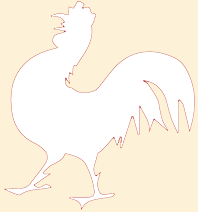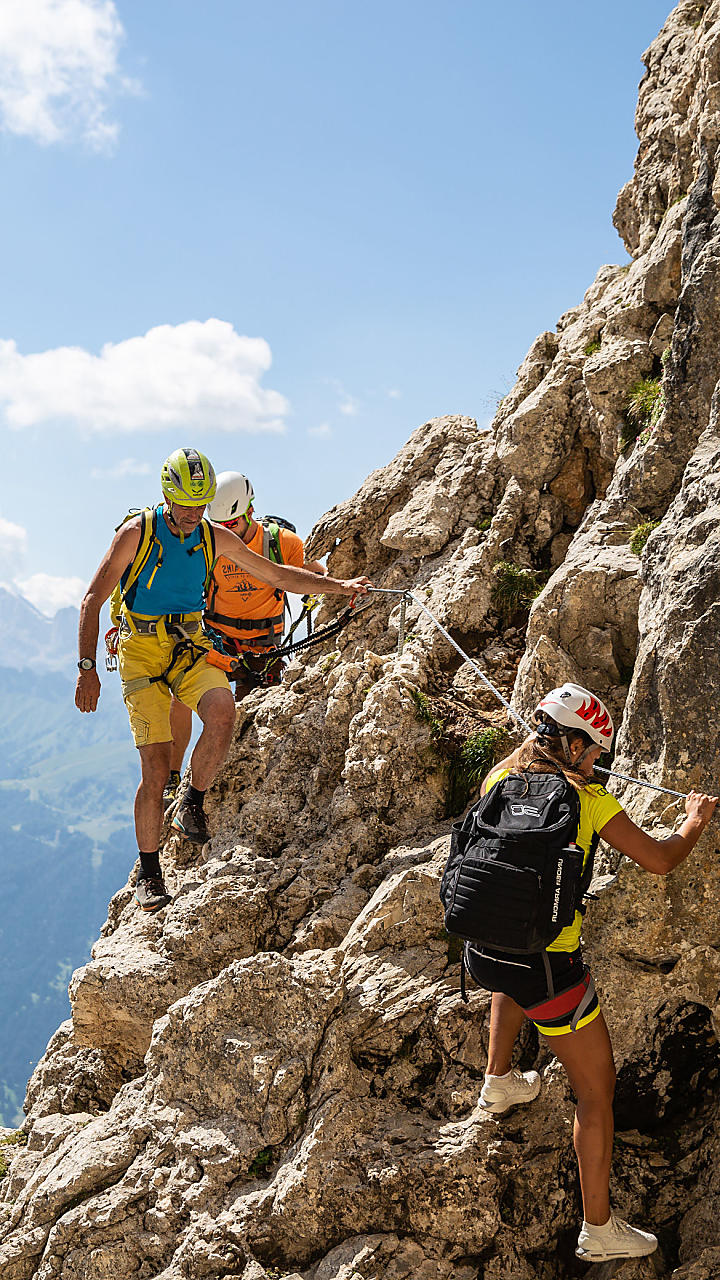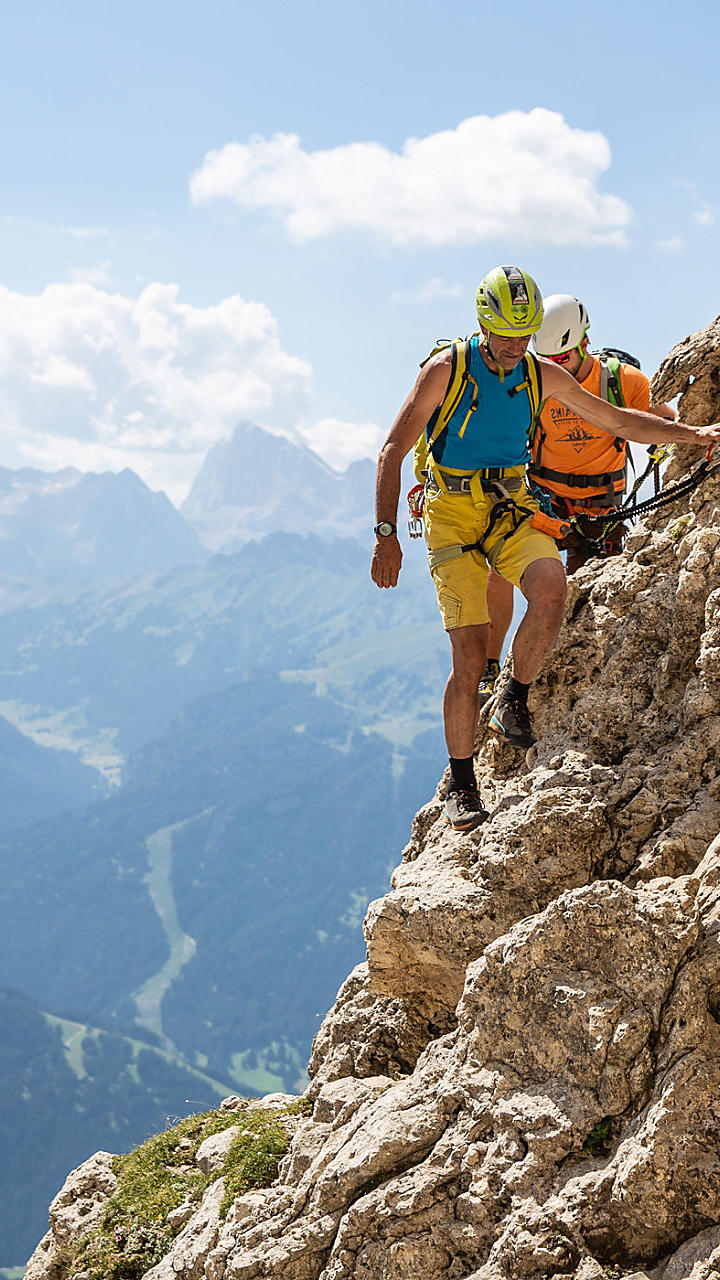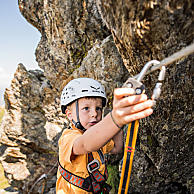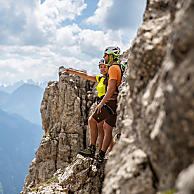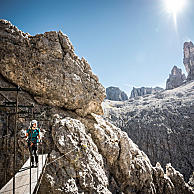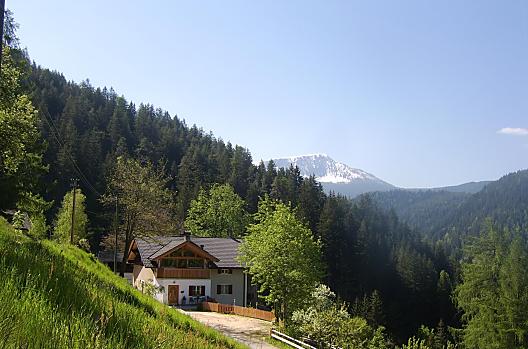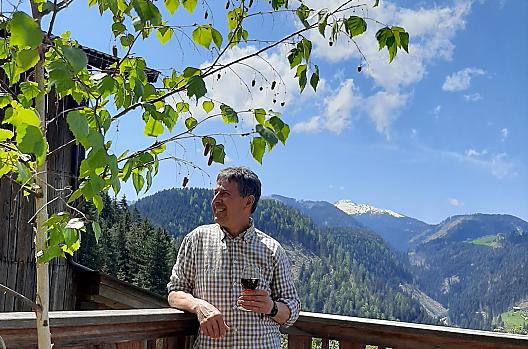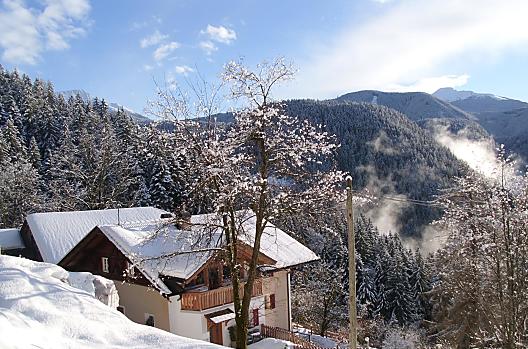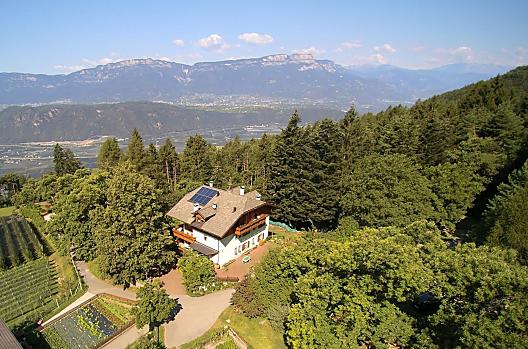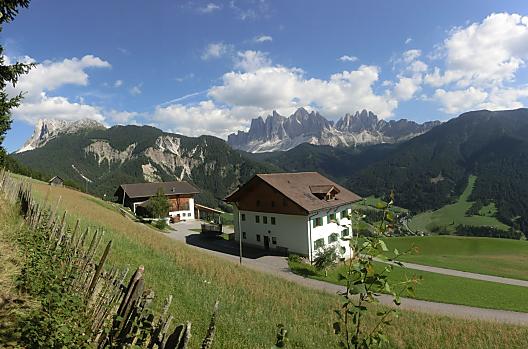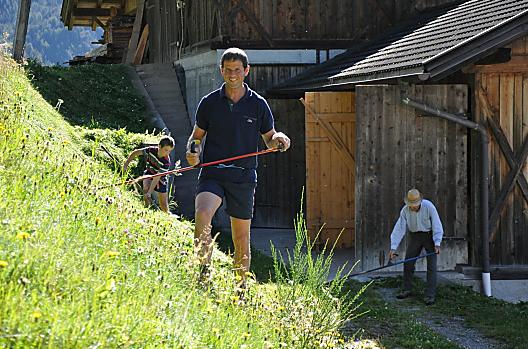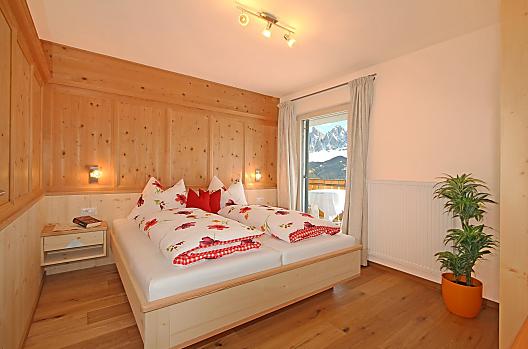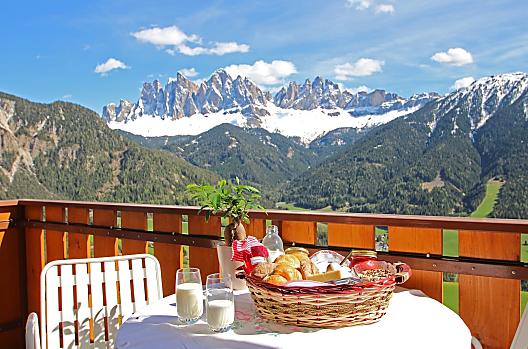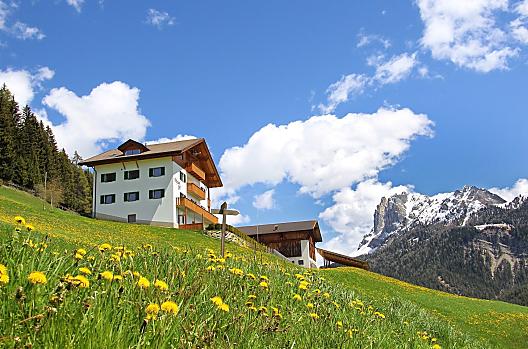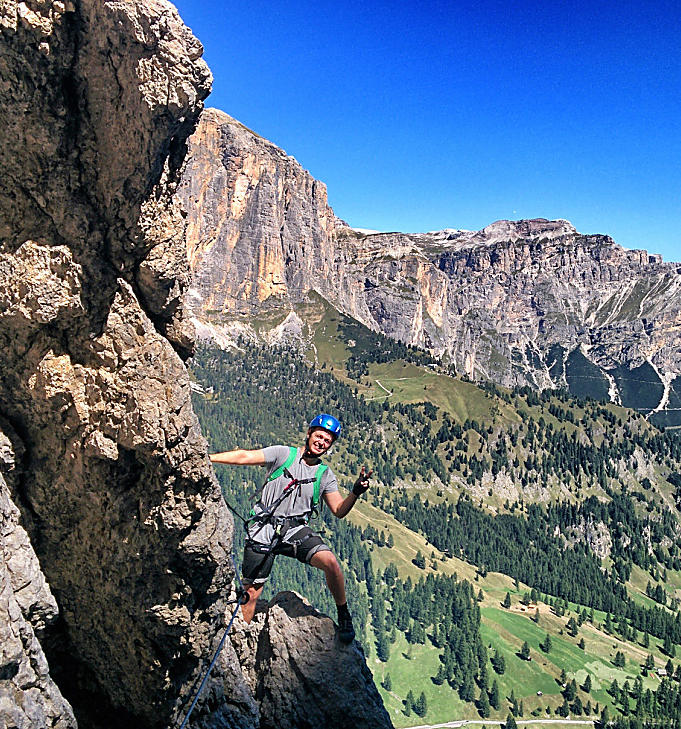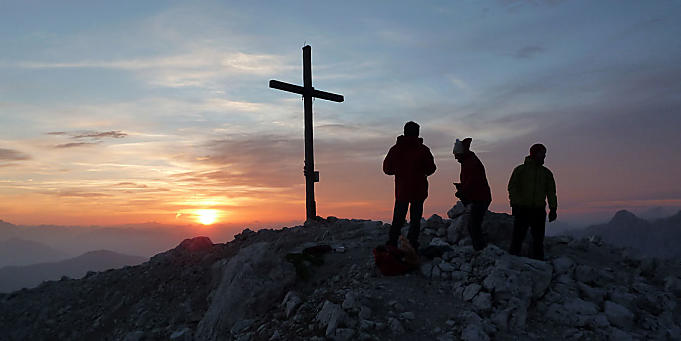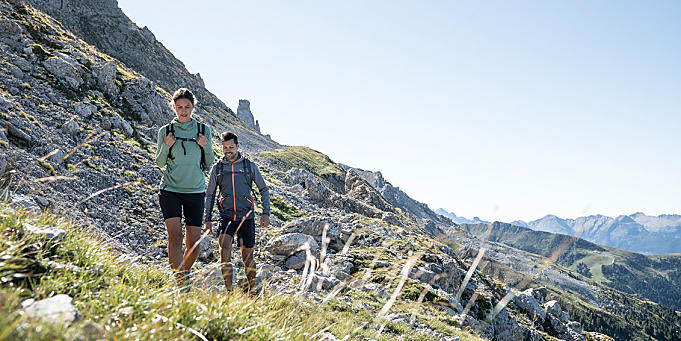Via ferrata in South Tyrol
Well secured over steep rock faces
More than 50 via ferratas in South Tyrol lead you safely past huge rocky outcrops and striking towers, over vertical walls and dizzying ridges. The via ferratas in the Dolomites are among the most beautiful in the entire Alps due to their unique scenery.
More than 50 via ferratas in South Tyrol lead you safely past huge rocky outcrops and striking towers, over vertical walls and dizzying ridges. The via ferratas in the Dolomites are among the most beautiful in the entire Alps due to their unique scenery.
The South Tyrolean via ferratas are scattered throughout the region. Among the best-known in the Dolomites are the Günther-Messner-Steig in Villnöss, the via ferrata on the small Cirspitze and the Pisciadù on the Grödner Pass, the Paternkofel in the shadow of the Drei Zinnen and the Rotwand and the Masaré via ferrata at the foot of the Rosengarten.
The Tabaretta via ferrata is reserved for experienced climbers and rewards you with a breathtaking view of the Ortler, the highest mountain in South Tyrol.
The Heini Holzer Steig on the Ifinger, the Stuller Wasserfall Steig in the Passeier valley, the Hoachwool at the entrance to the Schnalstal valley and the Fennberg via ferrata in the south of South Tyrol offer less difficult but still demanding alternatives.
Many South Tyrolean farms with holiday apartments and rooms are ideal starting points for these spectacular via ferrata tours. After an invigorating farm breakfast, it's off early in the morning to nature's climbing paradise.
Old iron trails
The Italian term "via ferrata" literally means "iron path". Paths in exposed spots were equipped with fixed wire ropes, steps and ladders, which are mainly made of iron.
Centuries ago, mountain farmers used ladders and ropes to create connecting paths between farms and high-altitude Alpine pastures. They are some of the forerunners of the modern via ferrata in South Tyrol.
In the Dolomites, in particular, many via ferratas were created during the First World War. The soldiers used them for patrols and as access routes for supplies along the Dolomite front. Even today, the climbs are reminiscent of the mountain war.
Well secured
A taut wire rope leads along the via ferrata, which climbers hook themselves onto with two carabiners. In order to be safe on a "via ferrata", adventurers need the right equipment: a via ferrata set (special safety system), a climbing harness and a helmet. Good shoes and gloves ensure the necessary grip on the rock. In addition, those attempting a via ferrata should not suffer from vertigo and must be sure-footed. Before starting the tour, a careful look at the weather report is an absolute must. If all requirements are met, unforgettable experiences on the mountain await you.


